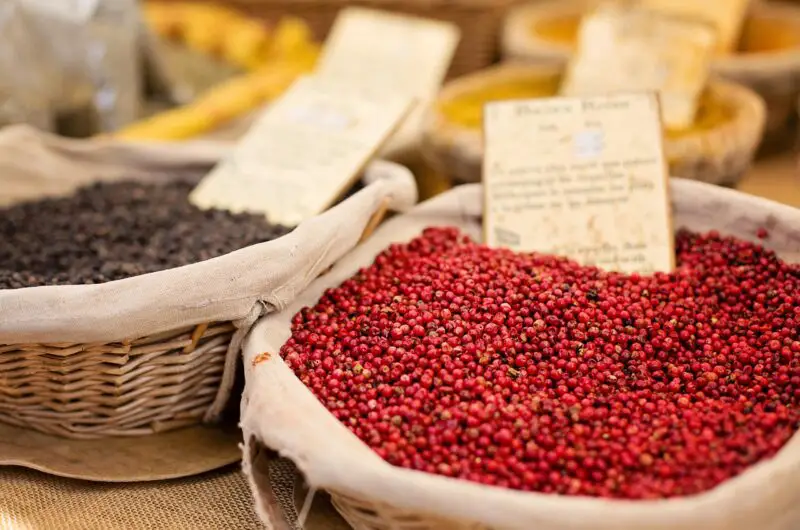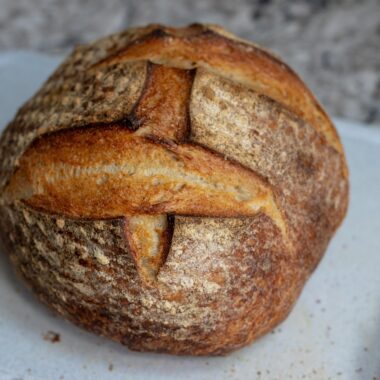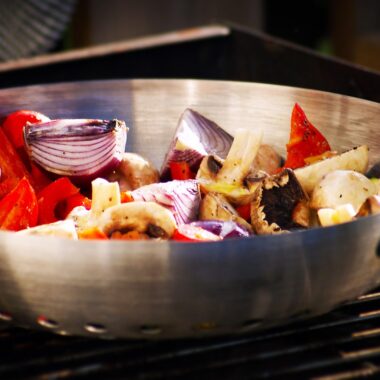Spices are the unsung heroes of the culinary world. They transform bland ingredients into vibrant, unforgettable dishes, adding depth, warmth, and complexity with just a pinch or two. Yet, for many home cooks, the spice rack can feel like a chaotic puzzle—full of potential but intimidating to navigate. How do you know which spices work together? What makes some combinations sing while others fall flat? The art of pairing spices for maximum flavor isn’t reserved for professional chefs; it’s a skill anyone can master with a bit of knowledge and experimentation. In this guide, we’ll explore the principles of spice pairing, break down key flavor profiles, and offer practical tips to elevate your cooking to new heights.
The Foundation: Understanding Spice Flavors
Before you can pair spices effectively, you need to understand their individual personalities. Spices aren’t just “hot” or “not hot”—they carry a spectrum of flavors, from earthy and nutty to sweet, bitter, or pungent. Here’s a quick rundown of some common spices and their core characteristics:
- Cumin: Earthy, warm, slightly nutty with a subtle bitterness.
- Coriander: Citrusy, floral, and mildly sweet.
- Cinnamon: Sweet, woody, and warming.
- Paprika: Ranges from sweet and fruity (sweet paprika) to smoky and rich (smoked paprika).
- Turmeric: Earthy, slightly bitter, with a mustard-like undertone.
- Cloves: Intensely sweet, aromatic, and slightly astringent.
- Chili Powder: Spicy, smoky, and sometimes fruity, depending on the blend.
- Cardamom: Sweet, floral, with a hint of eucalyptus-like freshness.
Each spice brings its own voice to the dish, and successful pairing is about creating harmony—or intentional contrast—among these voices. Think of it like assembling a choir: you want sopranos, altos, and basses working together, not shouting over each other.
Principle 1: Start with Complementary Flavors
The easiest way to begin pairing spices is to combine those that naturally complement each other. Complementary spices share similar flavor notes or enhance one another’s strengths. For example:
- Cumin and Coriander: This classic duo is a staple in Indian, Mexican, and Middle Eastern cuisines. Cumin’s earthy depth balances coriander’s bright, citrusy lift, creating a well-rounded base for curries, tacos, or roasted vegetables.
- Cinnamon and Cloves: Both spices lean sweet and warm, making them a perfect match for baked goods, stews, or spiced rice dishes like biryani. Their shared woody undertones amplify each other without clashing.
- Paprika and Chili Powder: For a smoky, spicy kick, these two play off each other beautifully in rubs for grilled meats or hearty chili recipes. The paprika softens the chili’s sharpness with its fruity depth.
When pairing complementary spices, start with small amounts and taste as you go. A 1:1 ratio is a safe starting point, but you can adjust based on the dish or your preference. The goal is balance, not domination.
Principle 2: Layer Contrasting Flavors
While complementary spices create harmony, contrasting spices add excitement. Pairing opposites—like sweet with heat or earthy with bright—can elevate a dish by keeping your palate engaged. Here are some winning contrasts:
- Cinnamon and Chili Powder: Sweet meets spicy in this bold pairing, popular in Mexican hot chocolate or Moroccan tagines. The cinnamon softens the chili’s bite while adding a surprising twist.
- Turmeric and Black Pepper: Turmeric’s earthy bitterness gets a sharp, pungent boost from black pepper. This isn’t just a flavor win—black pepper enhances turmeric’s health benefits by increasing curcumin absorption.
- Cardamom and Cayenne: The floral sweetness of cardamom dances with cayenne’s fiery heat, ideal for adventurous desserts or spiced chai.
When working with contrasts, use a light hand with the stronger spice (usually the heat or bitterness) to avoid overwhelming the dish. A ratio like 2:1 (milder to stronger) often works well.
Principle 3: Build on Regional Traditions
Cuisine-specific spice blends offer a cheat sheet for pairing. These combinations have been perfected over centuries, reflecting the flavors of their regions. Study them, and you’ll unlock foolproof pairings:
- Garam Masala (India): Typically includes cumin, coriander, cardamom, cinnamon, and cloves. This warm, aromatic blend is versatile for curries, lentils, or roasted meats. The spices are toasted first, enhancing their oils and melding their flavors.
- Ras el Hanout (North Africa): A complex mix that might feature paprika, cumin, cinnamon, ginger, and turmeric. It’s bold yet balanced, perfect for tagines or couscous dishes.
- Chili Powder Blend (Mexico/Southwest USA): Often combines chili peppers, cumin, garlic powder, and oregano. It’s smoky and robust, ideal for tacos, enchiladas, or stews.
Start with pre-made blends to get a feel for how the spices interact, then tweak them to suit your taste. For example, if garam masala feels too sweet, dial back the cinnamon and bump up the cumin.
Principle 4: Match Spices to Ingredients
Spices don’t exist in a vacuum—they need to complement the main ingredients in your dish. Think about the flavor profile of your protein, vegetable, or grain, and choose spices that enhance it:
- Meats:
- Beef loves bold, earthy spices like cumin, smoked paprika, and black pepper.
- Chicken pairs well with versatile players like turmeric, coriander, or chili powder.
- Lamb shines with warm, sweet spices like cinnamon, cloves, or allspice.
- Vegetables:
- Root vegetables (carrots, potatoes) thrive with nutmeg, cumin, or rosemary.
- Leafy greens (spinach, kale) pop with brighter spices like coriander or mustard seed.
- Squash and sweet potatoes adore cinnamon, ginger, or cayenne for a sweet-spicy balance.
- Grains and Legumes:
- Rice dishes sing with saffron, cardamom, or cloves.
- Lentils and beans pair naturally with cumin, turmeric, or bay leaves.
Test pairings by cooking a small portion first. For example, roast a few potato wedges with cumin and paprika before committing to a whole tray.
Principle 5: Use Heat and Fat to Unlock Flavor
Spices are often oil-soluble, meaning their flavors bloom when cooked in fat (oil, butter, ghee) or heat. Dry-toasting whole spices in a skillet or blooming ground spices in hot oil can intensify their impact. Here’s how:
- Toasting: Heat a dry pan over medium heat, add whole spices (like cumin seeds or coriander seeds), and toast for 1-2 minutes until fragrant. Grind them afterward for a fresher, bolder taste.
- Blooming: Sauté ground spices in oil or butter for 30-60 seconds before adding other ingredients. This works wonders with turmeric, paprika, or chili powder, releasing their aromas and deepening their flavor.
Avoid high heat for too long, though—spices can burn and turn bitter. Medium heat is your friend.
Principle 6: Balance with Salt and Acid
Spices don’t work alone—they need salt and acid to shine. Salt amplifies flavors, while acid (lemon juice, vinegar, yogurt) brightens them, preventing a dish from feeling heavy. For example:
- A cumin-coriander chicken curry feels flat without a pinch of salt and a squeeze of lime.
- Cinnamon-spiced roasted carrots need a yogurt drizzle to cut through the sweetness.
Add salt early to meld flavors, and finish with acid to lift the dish.
Practical Tips for Experimentation
Ready to start pairing? Here are some actionable steps to build confidence:
- Start Small: Pick two spices you like and test them in a simple dish, like scrambled eggs or roasted veggies. Adjust ratios until you hit the sweet spot.
- Smell Before You Cook: Rub spices between your fingers or mix them in a bowl and inhale. Your nose can predict how they’ll taste together.
- Keep a Spice Journal: Note what works (and what doesn’t). Over time, you’ll develop your own signature blends.
- Use Fresh Spices: Ground spices lose potency after 6-12 months. Buy small amounts and store them in airtight containers away from heat and light.
- Taste as You Go: Spices evolve during cooking, so sample your dish at different stages and adjust accordingly.
Sample Recipes to Practice Pairing
Here are two beginner-friendly recipes to test your spice-pairing skills:
1. Spiced Chickpea Stew (Serves 4)
- Spices: 1 tsp cumin, 1 tsp coriander, ½ tsp turmeric, ¼ tsp cinnamon.
- Ingredients: 1 can chickpeas (drained), 1 onion (chopped), 2 garlic cloves (minced), 1 can diced tomatoes, 2 cups vegetable broth, olive oil, salt, lemon juice.
- Method: Sauté onion and garlic in olive oil. Add spices and bloom for 30 seconds. Stir in chickpeas, tomatoes, and broth. Simmer 20 minutes. Finish with salt and a squeeze of lemon.
- Why it Works: Cumin and coriander provide an earthy base, turmeric adds depth, and cinnamon brings subtle sweetness, balanced by the acidic tomatoes and lemon.
2. Spicy-Sweet Roasted Sweet Potatoes (Serves 2)
- Spices: 1 tsp paprika, ½ tsp chili powder, ½ tsp cinnamon, pinch of salt.
- Ingredients: 2 sweet potatoes (cubed), olive oil, honey (optional).
- Method: Toss sweet potatoes in olive oil and spices. Roast at 400°F (200°C) for 25-30 minutes. Drizzle with honey if desired.
- Why it Works: Paprika and chili powder add smoky heat, cinnamon enhances the natural sweetness, and salt ties it all together.
Common Mistakes to Avoid
- Overloading: Too many spices can muddy the flavor. Stick to 3-5 per dish unless you’re confident.
- Skipping Balance: Heat without sweetness or earthiness without brightness can leave a dish one-note.
- Ignoring Freshness: Old spices taste dull. Sniff them—if they’re faint, toss them.
Conclusion: Spice Pairing as an Art and Science
Pairing spices for maximum flavor is both a science—understanding profiles and techniques—and an art—trusting your instincts and palate. Start with the basics: complement, contrast, and build on tradition. Match spices to your ingredients, unlock their potential with heat and fat, and balance them with salt and acid. With practice, you’ll move beyond recipes, creating dishes that reflect your unique taste. So, raid your spice rack, experiment fearlessly, and let every meal become a flavorful adventure.
References
- McGee, Harold.On Food and Cooking: The Science and Lore of the Kitchen. Scribner, 2004.
- A foundational text on the science of flavors, including how spices interact with heat, fat, and other ingredients.
- Ruhlman, Michael, and Brian Polcyn.Ratio: The Simple Codes Behind the Craft of Everyday Cooking. Scribner, 2009.
- Offers insights into balancing flavors, which applies to spice pairing ratios and techniques.
- Page, Karen, and Andrew Dornenburg.The Flavor Bible: The Essential Guide to Culinary Creativity, Based on the Wisdom of America’s Most Imaginative Chefs. Little, Brown and Company, 2008.
- A comprehensive guide to flavor pairings, including spices, with practical examples from global cuisines.
- Spice Advice by McCormick. McCormick & Company. Available at: www.mccormick.com/spice-advice.
- A resource for understanding spice characteristics and common pairings, grounded in decades of spice industry expertise.
- David, Elizabeth.Spices, Salt and Aromatics in the English Kitchen. Penguin Books, 1970 (reprinted editions available).
- A classic exploration of how spices have been historically paired in European cooking, with timeless principles.
- The Kitchn. “A Guide to Pairing Spices with Foods.” Available at: www.thekitchn.com.
- A practical online resource offering spice pairing tips for home cooks, reflecting modern culinary trends.
- Jaffrey, Madhur.Madhur Jaffrey’s Indian Cooking. Barron’s Educational Series, 1983.
- A detailed look at Indian spice blends like garam masala, with recipes that demonstrate effective pairing.


















